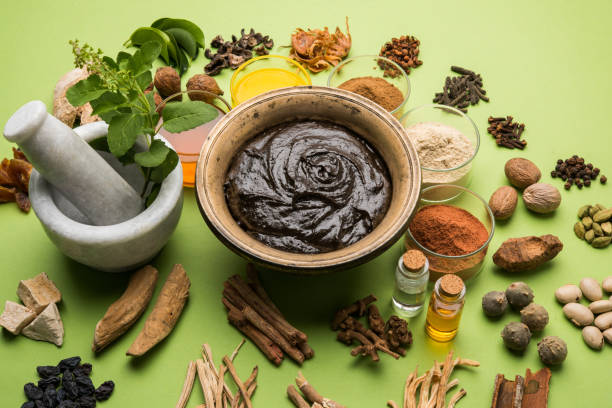
What Is Ayurvedic Treatment? Discover the Ancient Science of Healing
Ayurvedic treatment, a term that has captured global attention, is more than just a buzzword in holistic health. But what is Ayurvedic treatment? Rooted in the ancient wisdom of India, Ayurveda is a comprehensive system of medicine that aims to bring harmony between the mind, body, and spirit. It offers personalized approaches to health that focus on prevention, rejuvenation, and cure through natural methods. Let us dive into this fascinating world and explore its core principles, benefits, and practices.
What is Ayurvedic Treatment and Its Historical Significance?
To answer the question, what is Ayurvedic treatment, we must first understand its origins. Ayurveda, meaning “the science of life,” dates back over 5,000 years and is considered one of the oldest healthcare systems in the world. It was developed by ancient Indian sages who meticulously studied the human body, nature, and the cosmos. These sages compiled their findings in texts such as the Charaka Samhita and Sushruta Samhita, which still serve as foundational resources for Ayurvedic practitioners today.
Ayurvedic treatment emphasizes the balance of the three doshas—Vata, Pitta, and Kapha—which govern physiological and psychological functions. Imbalances in these doshas are believed to lead to illness, and restoring balance is the key goal of Ayurveda.
What is Ayurvedic Treatment’s Core Philosophy?
At its heart, Ayurvedic treatment focuses on the individual rather than the disease. This approach recognizes that every person is unique, with their own body constitution, mental tendencies, and lifestyle. But what is Ayurvedic treatment’s guiding principle? It revolves around maintaining balance and preventing disease rather than merely addressing symptoms.
- Dosha Balance: As mentioned earlier, Ayurveda identifies three doshas. Treatments are designed to restore harmony among these energies.
- Prakriti Analysis: This refers to understanding one’s unique constitution to craft personalized dietary, lifestyle, and treatment plans.
- Natural Healing: Ayurveda relies heavily on herbs, minerals, yoga, meditation, and detoxification processes like Panchakarma.
What is Ayurvedic Treatment’s Role in Modern Healthcare?
In today’s fast-paced world, Ayurvedic treatment is gaining popularity for its holistic approach to wellness. But what is Ayurvedic treatment’s contribution to contemporary medicine? Let’s look at some key areas:
- Preventive Care: Ayurveda focuses on strengthening immunity and enhancing the body’s natural defense mechanisms.
- Chronic Conditions: From arthritis to diabetes, Ayurvedic therapies are known to manage chronic ailments effectively.
- Mental Health: Practices such as meditation and breathing exercises are integral to Ayurveda, promoting mental clarity and reducing stress.
- Lifestyle Guidance: Ayurveda offers practical advice on daily routines (Dinacharya) and seasonal regimens (Ritucharya) to stay healthy year-round.

What is Ayurvedic Treatment’s Approach to Common Ailments?
When people ask, “What is Ayurvedic treatment for specific health concerns?”, the answer lies in its ability to address the root cause of illnesses. Here are a few examples:
- Digestive Issues: Ayurveda attributes digestive problems to an imbalance in Agni (digestive fire). Remedies include herbal formulations like Triphala and dietary changes.
- Skin Disorders: Conditions like eczema and psoriasis are treated with detoxification, herbal pastes, and dietary adjustments.
- Stress and Anxiety: Practices such as Shirodhara (pouring warm oil on the forehead) and Ashwagandha (an adaptogenic herb) are highly effective.
- Joint Pain: Ayurvedic oils and therapies like Abhyanga (oil massage) are widely used to alleviate pain and inflammation.
What is Ayurvedic Treatment’s Signature Therapy—Panchakarma?
A highlight of Ayurvedic treatment is Panchakarma, a five-step detoxification therapy designed to cleanse the body of toxins (Ama). So, what is Ayurvedic treatment’s Panchakarma all about? This transformative process includes:
- Vamana (Emesis Therapy): Induced vomiting to expel toxins from the stomach.
- Virechana (Purgation Therapy): Cleansing the intestines through herbal laxatives.
- Basti (Enema Therapy): Using medicated oils or decoctions to cleanse the colon.
- Nasya (Nasal Therapy): Administering herbal oils through the nostrils to clear sinus congestion.
- Raktamokshana (Bloodletting): Purifying the blood to treat skin disorders and other ailments.
What is Ayurvedic Treatment’s Approach to Nutrition?
Diet plays a pivotal role in Ayurveda. But what is Ayurvedic treatment’s perspective on food? It views food as medicine and emphasizes mindful eating practices. Here are some Ayurvedic dietary principles:
- Fresh and Seasonal Foods: Consuming locally grown, seasonal produce to align with natural rhythms.
- Spices and Herbs: Ingredients like turmeric, ginger, and cumin not only enhance flavor but also promote digestion and immunity.
- Meal Timing: Eating meals at regular intervals to maintain optimal digestion.
- Custom Plans: Tailoring diet to individual dosha types for maximum benefit.

What is Ayurvedic Treatment’s Role in Beauty and Skincare?
Ayurveda’s influence extends to beauty and skincare, offering natural solutions that enhance inner and outer radiance. So, what is Ayurvedic treatment for glowing skin? It includes:
- Abhyanga: Daily oil massage for hydration and improved circulation.
- Ubtan: Herbal face and body masks to exfoliate and rejuvenate.
- Hydration: Drinking warm water with lemon to detoxify and hydrate the skin.
- Herbal Remedies: Using ingredients like sandalwood, aloe vera, and neem for their therapeutic properties.
What is Ayurvedic Treatment’s Global Appeal?
In recent years, Ayurveda has gained worldwide recognition. But what is Ayurvedic treatment’s allure on a global scale?
- Non-Invasive Nature: People are drawn to Ayurveda for its gentle and non-invasive methods.
- Eco-Friendly Practices: Its reliance on natural resources aligns with the growing demand for sustainable healthcare.
- Holistic Approach: By addressing physical, mental, and spiritual aspects, Ayurveda resonates with those seeking comprehensive wellness.
Conclusion: The Timeless Wisdom of Ayurveda
So, what is Ayurvedic treatment? It is a timeless, holistic approach to health that prioritizes balance, prevention, and natural healing. With its rich history and proven efficacy, Ayurveda continues to inspire millions across the globe. If you’re intrigued by this ancient science, explore Healthy Health Spot for the best information on health and wellness. Let’s embrace the Ayurvedic way of life and unlock the secrets to a healthier, happier you.
What do you think about Ayurvedic treatment? Have you tried any of its therapies? Share your thoughts, experiences, or questions in the comments below. Your insights could inspire others on their wellness journey!
